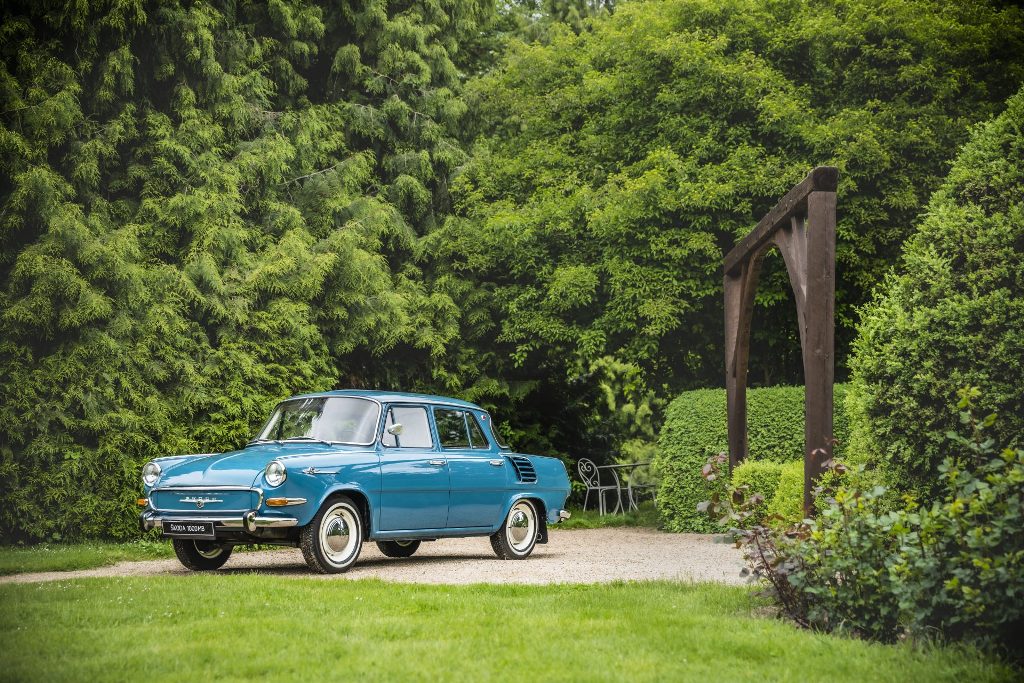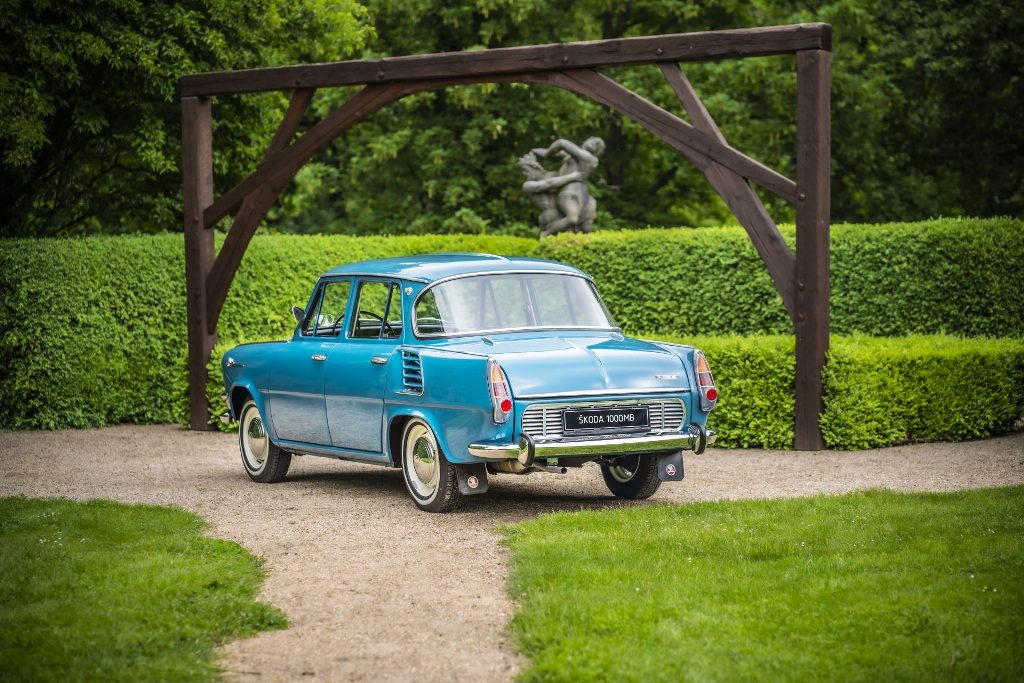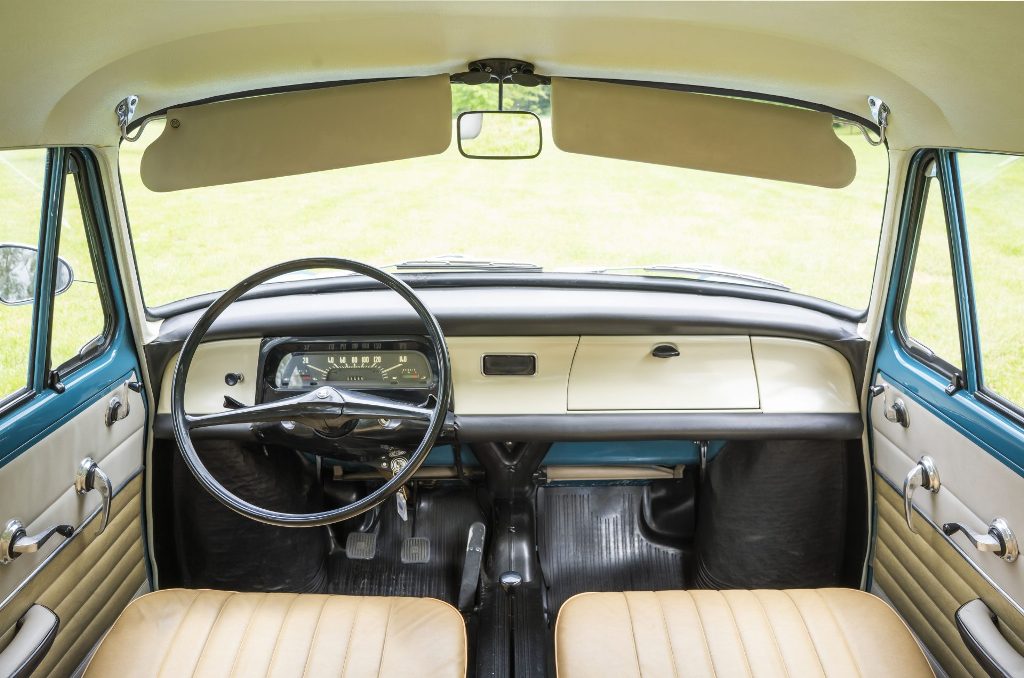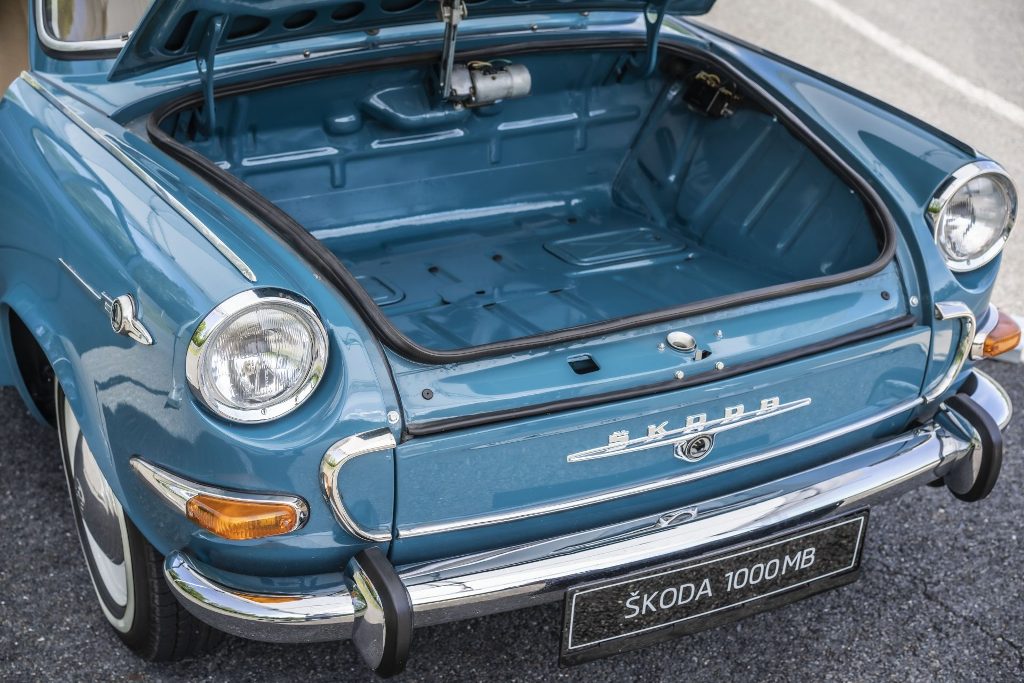ŠKODA 1000 MB: The Most Reliable Member of Your Family
ŠKODA built a completely new, modern production line for the new 1000 MB at the main plant in Mladá Boleslav. With a compact drive unit in the rear of its self-supporting body, the elegant four-door car was one of the most advanced vehicles in the 1.0-litre class in the 1960s.
In the spring of 1964, ŠKODA changed its design concept and once again demonstrated the engineering competence of the Czech automobile industry with the 1000 MB. The innovative model was based on an entirely new philosophy: its modern four-cylinder engine was moved to the rear where it drove the rear wheels.
Many other pioneering changes were also made. For example, the cylinder and crankshaft housings, as well as the bell housing of the manual four-speed transmission, were made of lightweight cast aluminium. Thanks to a patent from the Czech engineer Josef Polák in 1922, these parts could be produced in a much shorter time and with reduced energy consumption. ŠKODA thus continued its 65-year tradition in the field of engine design and manufacturing. It only became apparent with time how visionary the new family of engines was: it continued its career well into the 1990s after ŠKODA AUTO had joined the Volkswagen Group.
ŠKODA also comprehensively adapted its manufacturing facilities to produce the revolutionary 1000 MB, and a technologically advanced production line was established in a new part of the Mladá Boleslav plant. On this line, the self-supporting body of the four-door car was assembled from 665 pressed parts and with 6,900 welding spots.
The 1000 MB was launched as the successor to the successful OCTAVIA, which ŠKODA had built from 1959 to 1964. The development of the notchback model was carried out under the project name NOV (Nový Osobní Vůz), which translates to ‘new passenger vehicle’. At the beginning of the 1960s, the 1000 MB was subjected to practical tests under extreme climatic conditions. In addition to its origin in Mladá Boleslav (MB), its final type designation also referred to the displacement of the four-cylinder engine, which was 1,000cc.
The water-cooled in-line engine with overhead OHV valves initially provided 37 hp (27 kW), making the innovatively designed family car, which weighed only 755 kilograms thanks to the extensive use of aluminium alloys, easy to handle. The ŠKODA 1000 MB reached a top speed of 120 km/h and averaged seven to eight litres of petrol per 100 kilometres. In 1966 the power output rose to 43 hp (32 kW) and a second engine was added to the range – the 52 hp (38 kW) 1100 MB. The MBX two-door version added a touch of extravagance – it is in high demand among classic car collectors today.
Despite its compact dimensions of 4.17 metres long, 1.62 metres wide and 1.39 metres tall, the ŠKODA 1000 MB offered a very spacious and functional interior. The model had two boots: the luggage compartment behind the rear seats could even be accessed during journeys; the front one offered a volume of up to 220 litres. ŠKODA’s Simply Clever philosophy is demonstrated through ideas such as mounting the spare wheel behind the foldable part of the front mask. This allowed access to the spare wheel without having to unload the front boot. Also on board, ex-works were seats that could be brought into a sleeping position by folding them down.
In addition to modern technology, the design of the ŠKODA 1000 MB with its sweeping lines, subtle curves and headlights recessed into the wings was also a significant step forward. The drop-shaped rear lights, for example, were a tasteful design element, while the great attention to detail was evident, for instance, in the swivelling emblem with the winged arrow that covered the fuel filler neck on the right-hand side.
More than half of the 440,639 ŠKODA 1000 MB and 1100 MB notchback sedans built were exported to dozens of markets between 1964 and 1969. In 1965, for example, deliveries abroad accounted for 70 per cent of production. The potential of the rear engine concept was demonstrated by the sporting successes of both the 1000 MB and later ŠKODA models such as the legendary 130 RS.
The blue 1000 MB in the photographs shown here dates from 1966 and is part of the ŠKODA Museum’s vehicle collection in Mladá Boleslav.
NEXT UP IN NEWS
- Infiniti Gearing up to Launch the All-New QX55 This Fall
- Cadillac to Take the Next Step With a Virtual Reveal of the Cadillac LYRIQ
- UAE Drift Star, Ahmad Daham, Teams up With Al-Futtaim Motors to Develop the Most Advanced Lexus Drift Car on the Planet
- Lynk & Co Cyan Racing Tests Four New Drivers for 2020 WTCR Programme
- Dubai-Born CAFU Makes a Bold and Confident Move by Removing Its Delivery Charges
- Alfa Romeo Racing ORLEN to have a high-tech boost ahead of the start of the 2020 season as Acer joins as official partner








Comments are closed.